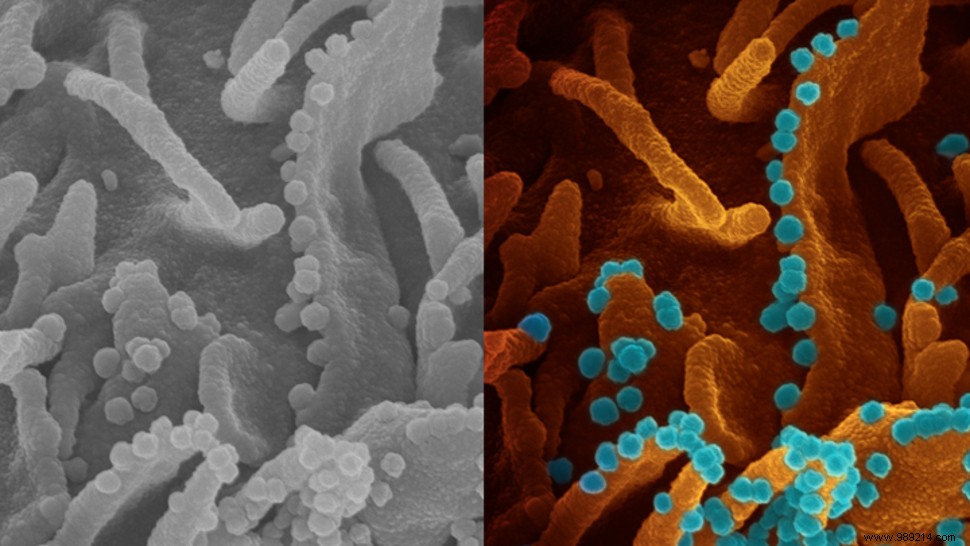An incredible image shared by a US lab shows us a snapshot of the process in which SARS-CoV-2 virus particles are released from a dying cell.
After entering our body, the viral particles of SARS-CoV-2 have only one objective:to attach themselves to the cells of the respiratory tract. Once these are attached to their host, the two lipid membranes, that of the aggressor and that of the victim, then fuse, allowing the coronavirus to release its genetic material inside.
"Copies" of the pathogen are then formed. Once there are enough of them, all these little "clones" then extract themselves from the dying cell, only to attach themselves to a new host.
Basically, then, viruses hijack cells, convert them into factories that produce more viruses, then abandon them when they become dying and useless.
This incredible image, captured with a scanning electron microscope (SEM) by Elizabeth Fischer, head of the Rocky Mountain Lab (Montana), reveals a real snapshot of this "viral shedding" , the process in which virus particles extract themselves from the dying cell.

In this shot, "folds and the orange-brown protrusions are part of the surface of a single cell infected with SARS-CoV-2 , writes the researcher. This particular cell comes from a commonly studied primate renal epithelial cell line. Small blue spheres emerging from the cell surface are SARS-CoV-2 particles ".
This image shows us how extremely efficient SARS-CoV-2 can be at multiplying inside its host. As we can see above, a single infected cell is capable of releasing thousands of new virus particles which, in turn, will infect other cells.
The shedding of viruses from the infected organism is then the next step, with a clear objective:the contamination of other subjects . In general, viruses can take different extraction routes, but for SRARS-CoV-2, the preferred route remains mainly that of the respiratory tree (cough, sneeze).
Finally, note that Covid-19 has a basic reproduction rate (R0) estimated at between 2.2 and 3.9 . In other words, one person affected by the virus will be able to infect three people on average. Each of these people will then contaminate three others, who will themselves contaminate three others, etc. This is why, in addition to having a special "affinity" for the receptors in our cells, SRARS-CoV-2 deploys and spreads so quickly .
For comparison, influenza has a base reproduction number between 0.9 and 2.1, while measles has an estimated R0 between 12 and 18 (c This is why this disease is so contagious).
Source